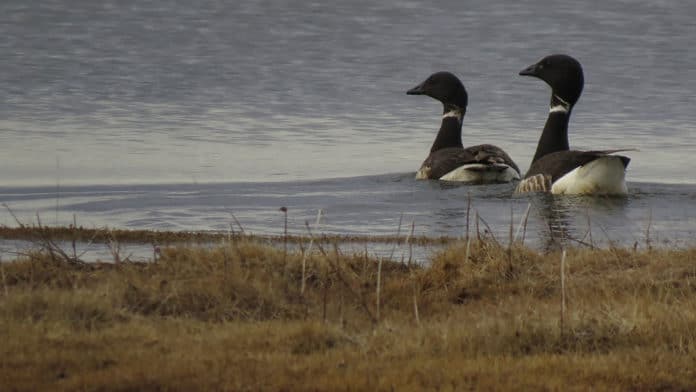Animal migration is a natural phenomenon that occurs in a range of species. It occurs from one habitat to another in search of food, better conditions, or reproductive needs. Due to climate change and human pressure, many migratory species are experiencing substantial population decline.
Some conservation strategies give hope for optimism. However, far more work on conserving migratory species is necessary to protect Earth’s great travelers. Growing concerns for migratory animals necessitate new assessments of the effects of climate change for species that rely on long-distance migration to the North.
A new study by the international research team, including scientists from the University of Bath, highlights climate change and human pressure eroding the benefits of migration. This also led to lower reproductive success and higher mortality in migrating species.
Scientists cautioned that such reduced advantages for long-distance migration pose a potentially serious threat to the structure and function of ecosystems.
The study referred to 25 recent studies that describe less profitability of migration for species that migrate over 1000km during the summer to north temperate and arctic regions to breed, returning south in the winter.
Animal migration offer benefits such as food supply, fewer diseases, and predators, which means the benefits outweigh the cost. But, the study suggests that this is not the case now for many populations.
Food supplies and availability in the North may be climatically mismatched with the reproduction of migratory animals, incurring higher offspring mortality, as described for many migratory birds.
Dr. Vojtěch Kubelka, the leading author and former Visiting Researcher at the University of Bath’s Milner Centre for Evolution, said: “These findings are alarming. We have lived with the notion that northern breeding grounds represent safe harbors for migratory animals.”
“On the contrary, the numerous Arctic and North temperate sites may now represent ecological traps or even worse degraded environments for diverse migratory animals, including shorebirds, caribou or butterflies.”
“Lemmings and voles used to be the main food source for predators such as foxes in the Arctic; however, the milder winters can cause rain to fall on snow and then re-freeze, preventing the lemmings from reaching their food.”
“With fewer lemmings and voles to feed on, foxes eat the eggs and chicks of migratory birds instead.”
“We’ve seen that rates of nest predation of Arctic migratory shorebirds have tripled over the last 70 years, in large part due to climate change.”
Scientists also proposed a simple framework to map the stressors for migratory animals across space and time. This helps them distinguish between suitable, naturally improved, or protected habitats on the one hand and the ecological traps or degraded environments with reduced or eroded benefits for migratory behavior on the other hand.
Dr. Kubelka said: “The recognition of emerging threats and the proposed framework of migration profitability classification will help to identify the most endangered populations and regions, enabling the implementation of suitable conservation measures.”
Professor Tamás Székely, Royal Society Wolfson Research Merit Award holder at the University of Bath’s Milner Centre for Evolution, said: “Animal migration from equatorial regions to the North temperate and the Arctic is one of the most significant movements of biomass in the world. But with reduced profitability of migration behavior and a smaller number of offspring joining the population, the negative trend will continue, and fewer and fewer individuals will be returning to the North.”
“The Earth is a complex ecosystem. Changes in migration profitability affect populations of migrating animals which precipitate in alterations of species composition, trophic food webs as well as the whole ecosystem functioning.”
“These patterns are particularly threatening for migratory animals as large numbers of those species are already negatively affected outside the breeding period, at their stopover sites and wintering grounds – and many have formerly relied on the northern latitudes to provide relative safe breeding grounds.”
Professor Rob Freckleton, from the School of Ecology and Evolutionary Biology at the University of Sheffield, said: “Our review highlights that there are possible threats to migratory species. There is a need for more research, and our article highlights solutions are really difficult because of the large areas involved.”
Journal Reference:
- Vojtěch Kubelka, Brett K. Sandercock, Tamás Székely, Robert P. Freckleton (2021) “Animal migration to northern latitudes: environmental changes and increasing threats” Trends in Ecology & Evolution. DOI: 10.1016/j.tree.2021.08.010
